The North-Eastern part of Malaysian Borneo, ‘Sabah’ is often referred to as “The land below the wind”, because of its location just south of the typhoon-prone region around the Philippines. North of Sabah the typhoons (tropical revolving storms or cyclones for the antipodeans amongst us) move east to west across the Philippines. Whilst some of these cyclones dip south across Palawan (southern Philippines), there is not enough coriolis to let them operate this far south. So, for the intrepid boaty types amongst us this is a good time to have a look at the coast of Sabah while waiting for the more ‘non-cyclone’ season and to then move further north into the Philippines. In Sabah one can day hop all the way to the Indonesian border about 300 miles around the coast from Kudat headed east and south.
First stop out of Kudat was Pulau Banggi actually north of Kudat where we slipped in for a quiet night in the very beautiful Milford Haven. Not wanting to waste too much time next morning and not too early we headed for an island stop at P. Tigabu and anchored off one of the ubiquitous native villages that either cling to the coast of the little islands all through here or park themselves on piles above the water. Tigabu is something of the standard little fishing island but like all the others one wonders where they get their water from. From Tigabu to P. Lankayan is 26 miles and on this island there is the ‘Lankayan Island Dive Resort’, apparently the self proclaimed ‘Paradise Island of the Sulu Sea’.
The island itself is quite small and advertises itself as an ‘Eco-Resort’ and comes fully equipped with a fellow titled the ‘Reef Guardian’; we did spend some time wondering how they get rid of rubbish and more pertinently their sewage, but anyway. It is very nice however and they have a turtle hatchery here, hoping it would seem, to do something about helping the turtle numbers recover in this part of the world. Having your own turtle hatchery does of course lend itself to spruking environmental credentials in spite of and ironically the resort having to be built in the first place on top of a significant haul out site for the turtles.
Having the resort there does however slow down the illegal removal of the turtle eggs from the beach. Apparently it is now illegal to catch turtles or dig up their eggs in Malaysia but it’s not too difficult to spot the (black market) fellows on the roads outside of towns letting you know they have turtle eggs for sale. Either way it is encouraging to see some sort of conservation moves happening given the state of rapacious development one sees all through Borneo.
We spent two nights on Lankayan in company now with English Andy (Shah) who was also island hopping down towards the diving hotspot of Mabul and nearby Sipidan islands. On Lankayan and in the spirit of protecting coral they have provided moorings for passing yachties and given the depth of water even close in (20 metres), here a mooring is always handy. You do however need to check moorings at times and after being woken that night by a passing, very nasty squall off a very ‘lee’ shore, Trevor was mortified to find the Gadfly swinging on one little, tiny strand of a very damaged nylon rope; yep, move moorings immediately!
The islands all through this part of Borneo are really quite beautiful with the obligatory white, coral-sand beaches, clear water that away from the coast takes on that lovely deep blue colour and there are even fish here to be caught. Geoff is very keen on the fishing and between Banggi and Sandakan we managed to catch three Spanish mackerel and two barracoutta. One of the barracouta was kind of big and took thirty minutes to get in; both went back. From Lankayan we headed for the bright lights of Sandakan and after a lunch stop on Shah out between the reefs (barbecued Spanish Mackerel) we put down the pick in front of the yacht club to spend three days doing the restaurants on the sea-front, fresh-water, swimming pools and road trips.
One of the things one has to do here is visit to the ‘Agnes Keith’ home/museum and tea house on the hill. Agnes was a writer married to the ‘Conservator of Forests’ (now that’s ironic, bring him back) before during and after the war who wrote about life in Borneo and as a prisoner of the Japanese. If you listen intently you might still hear the sounds of the British colonial era here, the clink of the gin and tonics and the clunk of the croquet balls!
There are also a few interesting conservation areas out of Sandakan, one of them the obligatory Orang-utan reserve ‘Sepilok Orang-Utan Rehabilitation Centre’ (they always seem to be rehabilitating the Orang-Utans), another the, Rain-forest Discovery Centre and the privately run ‘Proboscis Monkey Sanctuary’ where one can get close up and personal with Proboscis monkeys. Of all the monkeys these are probably the most chilled and laid back with people around; unlike the macaques who spend an inordinate amount of time aggressively hassling for food or anything that might potentially be food. Whilst at the Proboscis Monkey place we sat through a film outlining how the area came to be protected. It seems the local Chinese developers, after cutting and bulldozing most of the area for palm oil decided the small strip of mangroves along the shoreline could be left for the monkeys; palm oil probably doesn’t do very well in saline ground-water one guesses. The only problem is that most of the monkeys foraging range (they eat leaves mostly and rely on the mangroves) has been cleared and the monkeys would now appear to be heavily reliant on the sugar free pancakes provided by the reserve. This does of course provide an excellent way to guarantee monkeys for ones new nature-reserve, viewing area (60RM entry and 10RM per camera), all accompanied of course by much back slapping and self congratulation (in the film). However and once again, something is better than nothing.
After our three days at Sandakan and with now just Trevor and Geoff on board (Ana having headed for the diving hotspots of Mabul and Sipidan) we headed for ‘Dewhurst Bay’, a really quite shallow entranced bay that provides the northern entry for the Kinabatangan River. We were only going as far as just inside but after advice from the Thymers we manned Andy’s dinghy for a trip up the nearby creek/little estuary to spot some wild(er) proboscis monkeys in yet another residual nature reserve.
From Dewhurst to Tambisan island was another day hop to anchor off another fishing Kampong. The next day was a longer 65 mile hop to Pulau Gaya in the Tun Sakaran Marine Park where we once again met up with Thyme (Simon, Amanda, Sloop and the Chilean couple Manne and Christian). The next day we slipped two miles across to Pulau Maiga where we stopped opposite a sea-gypsy village for the night. Next day we were visited by a (little) canoe full of local kids touting sea-shells for exorbitant prices; ah well they are doing their best. Of course buying a couple of shells then meant quite the flotilla of boats heading out to get some money from the crazy boaties.
The weather next day (Thursday Oct20) turned somewhat pear-shaped so in rain, close hauled most of the way and in company with Shah we dodged around the reefs and headed for Mabul, apparently one of ‘the’ diving destinations in the known universe. Quite the place Mabul, loads of resorts built out across the water, dive boats zigging and zagging all over the shop, loads more resorts on shore and when in doubt park an oil-field, accommodation platform just offshore as yet another diving operation.
It seems the go here is to find a place that fits the bill for world heritage status then over-develop, trash the place and don’t stop building until there is no room left; shades of Thailand really. It all seems a bit ironic that many of the divers who come here to experience their bit of underwater-spectacular seem blind to the crass over development that has preceded them and will follow; probably spending to much time staring into the dive computers they were wearing in the dining room and bar in the evening! Quote from Geoff, “Maybe they could wear their aqualungs as well”? On the upside most of the dive companies appear to be promoting an environmental message re: reefs, fish, sharks and rubbish.
Having decided that Mabul was not the go for these sailors and not wanting to risk falling into the cult of PADI, we upped anchor the nest morning for the twenty odd miles to Semporna. This entailed a twelve mile run in the channel up inside Beaufort Reef to finally anchor just off the harbour entrance at Semporna amidst what seems to be a million noisy boats and possibly the worlds largest collection of floating rubbish; probably an over-statement but not by much. On the boats, these are mostly the little, small, go fast variety we saw so many of back in Kota Kinabulu that seem to provide the equivalent of cars in more land based locations. There are literally thousands of little houses parked on and over the water in this part of the world and every family has a least one boat and usually more than one. The result is the noisiest cacophony of un-muffled engine noise imaginable accompanied by total chaos. Being so close to the divers heaven of Sipidan there are also subsidiaries here of the PADI cult here with divers being ferried out each day from the very busy Semporna, water- front.
The plan was to spend three days here, long enough to pick up Geoff’s partner Patsy from Tawau, watch the rugby world cup final and buy food and diesel before heading north out into Darvel Bay. Patsy arrived in time to start making spectacular inroads into improving the Gadfly culinary capabilities while the world cup was a spectacular success for our cousins on the eastern side of the Tasman Sea; Simon was so happy it was breathtaking and Amanda is none too pleased with French lack of sportsmanship. Getting diesel was easy with the local lads carrying the jerries in wheelbarrows back to the town jetty. This went swimmingly for the Gadfly refuel but Amanda unhappily managed to come across the Semporna equivalent of the ‘Artful Dodger’ resulting in much heartache over issues of payment; note to oneself, always pay at the end! On the twenty fourth we extricated our anchor from the piles of debris on the bottom and headed out to revisit Tun Sakaran and try and climb the mountain at the back of the park headquarters.
How things happen sometimes!!!
Sabah is one of 13 member states of Malaysia. It is located on the northern portion of the island of Borneo. It is the second largest state in the country after Sarawak, which it borders on its southwest. It also shares a border with the province of East Kalimantan of Indonesia in the south. In spite of its status as a Malaysian state, Sabah remains a disputed territory; the Philippines has a dormant claim over much of the eastern part of the territory. The capital of Sabah is Kota Kinabalu, formerly known as Jesselton.
During the 7th century CE, a settled community known as Vijayapura, a tributary to the Srivijaya empire, was thought to have been the earliest beneficiary to the Bruneian Empire existing around the northeast coast of Borneo. Another kingdom which suspected to have existed beginning the 9th century was P’o-ni. It was believed that Po-ni existed at the mouth of Brunei River and was the predecessor to the Sultanate of Brunei.
The Sultanate of Brunei began after the ruler of Brunei embraced Islam. During the reign of the fifth sultan known as Bolkiah between 473–1524, the Sultanate’s thalassocracy extended over Sabah, Sulu Archipelago and Manila in the north, and Sarawak until Banjarmasin in the south. In 1658, the Sultan of Brunei ceded the northern and eastern portion of Borneo to the Sultan of Sulu in compensation for the latter’s help in settling a civil war in the Brunei Sultanate. In 1749, the Sultanate of Borneo ceded southern Palawan to Spain.
In 1761, Alexander Dalrymple, an officer of the British East India Company, concluded an agreement with the Sultan of Sulu to allow him to set up a trading post in the region, although it proved to be a failure. In 1846, the island of Labuan on the west coast of Sabah was ceded to Britain by the Sultan of Brunei and in 1848 it became a British Crown Colony. Following a series of transfers, the rights to North Borneo were transferred to Alfred Dent, whom in 1881 formed the British North Borneo Provisional Association Ltd. In the following year, the British North Borneo Company was formed and Kudat was made its capital.
In 1883 the capital was moved to Sandakan. In 1885, the United Kingdom, Spain, and Germany signed the Madrid Protocol of 1885, which recognised the sovereignty of Spain in the Sulu Archipelago in return for the relinquishment of all Spanish claims over North Borneo. In 1888 North Borneo became a protectorate of the United Kingdom. The Sultanate of Sulu was granted the north-eastern part of the territory as a prize for helping the Sultan of Brunei against his enemies and from then on that part of Borneo was recognised as part of the Sultan of Sulu’s sovereignty.
In 1878, Baron Von Overbeck, an Austrian partner representing The British North Borneo Company and his British partner Alfred Dent, leased the territory of Sabah. In return, the company was to provide arms to the Sultan to resist the Spaniards and 5,000 Malayan dollars annual rental based on the Mexican dollar’s value at that time or its equivalent in gold. This lease was continued until the independence and formation of the Malaysian federation in 1963 together with Singapore, Sarawak and the states of Malaya. As of 2004, the Malaysian Embassy to the Philippines had been paying cession/rental money amounting to US$1,500 per year (about 6,300 Malaysian Ringgits) to the heirs of the Sultanate of Sulu.



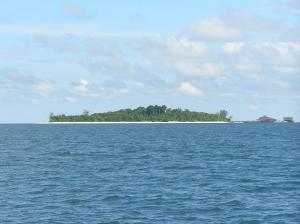







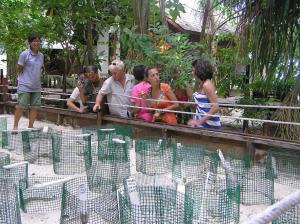


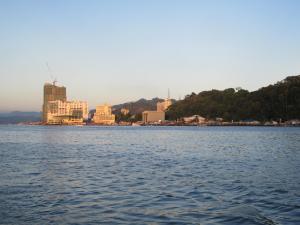
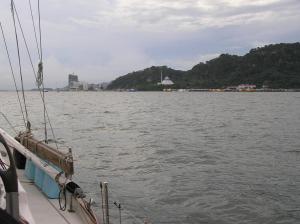
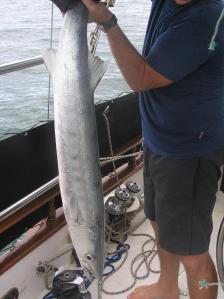






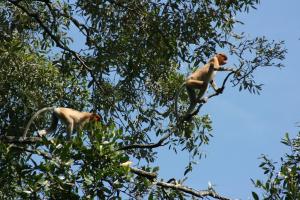

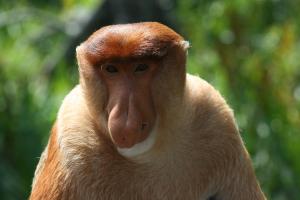


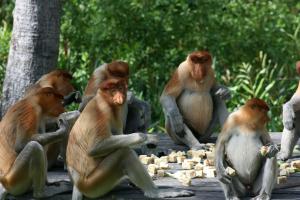
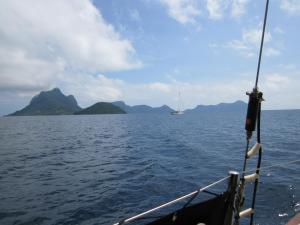








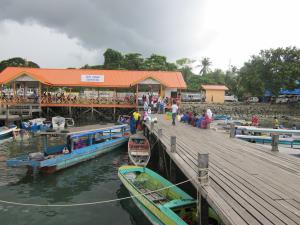

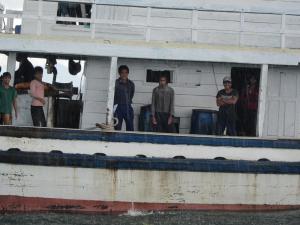
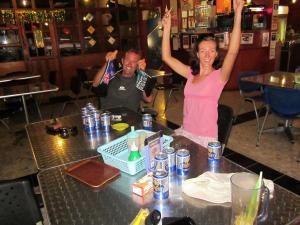

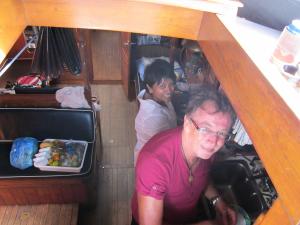
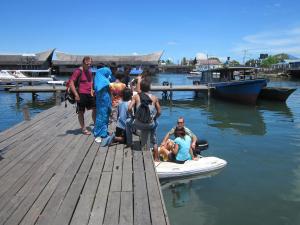
July 30, 2014 at 4:39 am |
I used to be suggested this blog by way of my cousin.
I am no longer sure whether this publish is written by means of him as nobody else recognise such distinctive about my trouble.
You are incredible! Thank you!